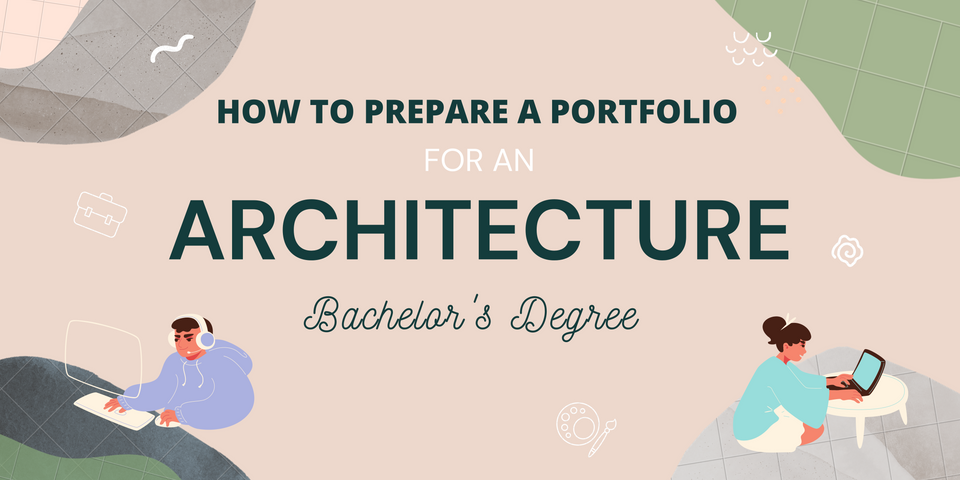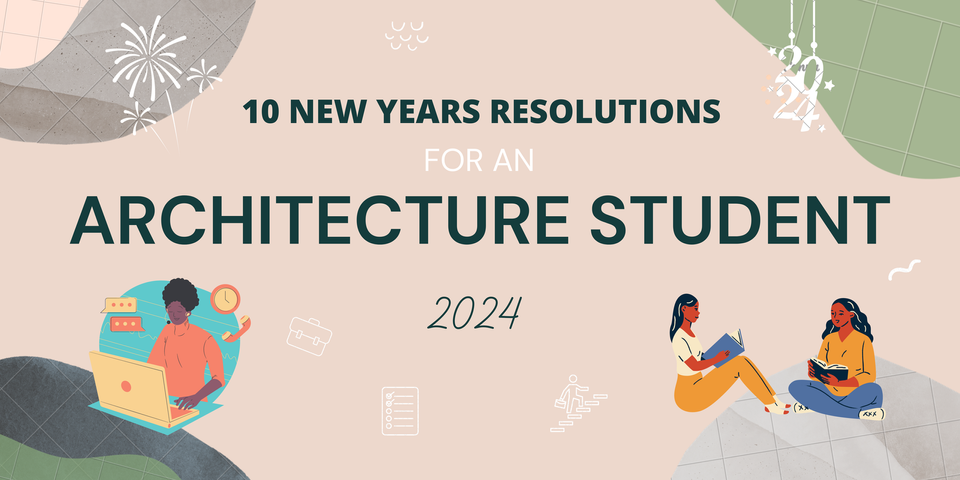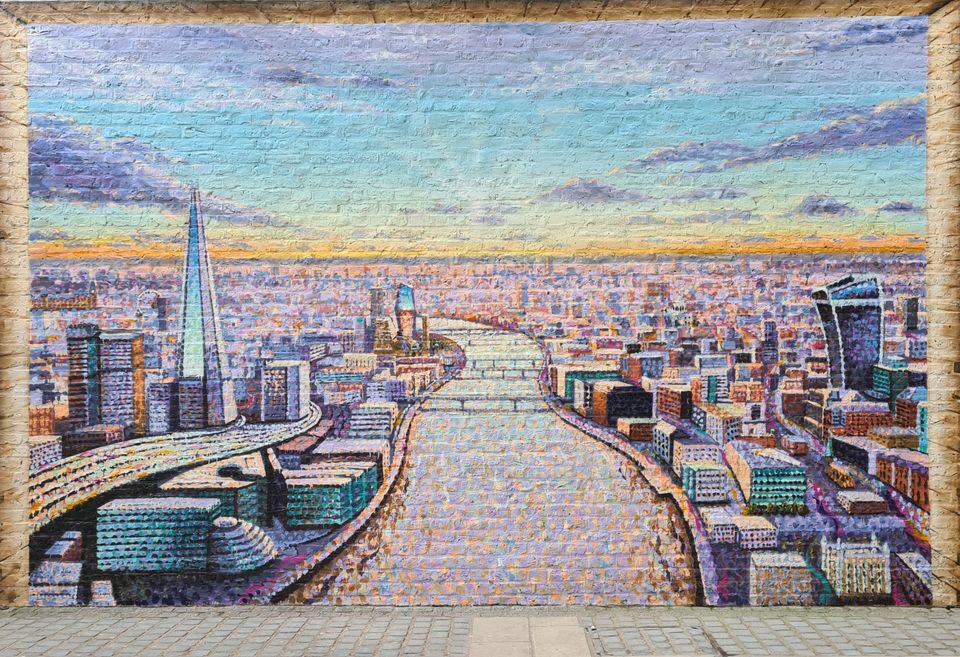Preparing a portfolio when applying for an Architecture Degree can be quite an intimidating task, you likely have not studied the subject at all so far, so proving you are right for the course may feel daunting. Fortunately, all universities are aware of this. They are not expecting qualified Architects to be applying, rather, they are expecting students of creativity and curiosity. This post is a step-by-step guide on how you can take the creative work you have done so far and turn it into a portfolio for your Architecture application.
Step 1:
Read the recommendations of the universities you are applying to. Each university has its own portfolio requirements which you should research before applying – showing a sharp eye to detail is a good start, so follow their recommendations carefully.
The general requirements tend to be 10 to 20 pages worth of work.
If you are applying to several universities - you will need to tailor your portfolio for each submission if the requirements are different.
Step 2:
Now you know what the final product needs to be, collate all your creative work from school, college and personal or extracurricular activities. This includes finished work, unfinished work, process works, drafts. The lot.
Universities like to see a range of mixed medias in your portfolio, as Architecture studies encourage a range of mixed medias during the process of design. Mixed media may include, but not limited to:
· Drawings (Analogue or Digital)
· Sketches
· Paintings
· Collages
· Photographs
· Graphic Design
· Models
· Sculptures
· Films
· Soundscapes / Music Compositions
· Writing (short stories / poetry etc.)
For a digital portfolio, all work will need to be photographed or scanned well, or linked to YouTube or similar for video/audio files. And for in person portfolios, universities encourage taking in your physical work, but of course 3D models or similar will need to be photographed.
Step 3:
Now you have your best and worst work in front of you, its time to tell a story. This story should show your creativity, your passion, your innovation, and your interest to pursue Architecture. Which pieces of work do you think show this? Architecture is all about the process of design, so if your school or college work includes a final product of design, make sure to show the story behind it, where did the idea start and how did it develop to the final design?
Pick your favourite projects and their associated draft and process works and this will now form your portfolio. You may decide there is too much here for the recommended sheets the university has given, in which case you will need to concentrate the work you have selected.
Alternatively, you may think you don’t have enough work to show, this might be the case if you did not formally pursue any creative subjects in school or college, in which case you will need to think about how you can build work for your portfolio to show your potential in a creative subject in time for your submission. If you fall in this category it is ideal to begin thinking about your portfolio at least a year prior to submission of your application, as you could consider taking additional creative courses or working on projects as a hobby to develop work for your portfolio.
Step 4:
You have your chosen work, now you need to prepare for both a digital portfolio and physical portfolio.
For a digital portfolio, you need to scan or photograph all your 2D and 3D work. Once you have done so and uploaded it to your computer/laptop, you have a choice of programs you can use to put together your sheets for your portfolio. The most basic programme which does the job, and most students have access to and know how to use at this stage, is Microsoft Publisher.
I would recommend using A3 landscape sheets for your portfolio, if this works well with the format and size of your work. If not try Portrait.
Each sheet should represent maximum a single project, depending on the size and depth of the project you may decide you need more than one sheet to show the work.
Presentation is everything. You could have incredible work, but bad presentation will prevent the person reviewing your portfolio to see it. So ensure you make time to put your portfolio together in a well presented format. For this type of portfolio, the images are the star of the show, so keep the text and titles to a minimum and keep it concise. Below is a Microsoft Publisher Template I have made which you can download and use:
Digital submissions need to be exported as a PDF, no more than 10MB in size. Publisher has the option for saving as a PDF directly from the ‘Save As’ option.
If you haven’t used Publisher and need to make a PDF, below is one (of many) websites which can convert your portfolio into a PDF document for free:
https://www.freepdfconvert.com/
And if you have converted it into a PDF but the document is too large, you can use the link below to reduce the size, but ensure its not so small that the quality of your images has reduced evidently.
https://www.ilovepdf.com/compress_pdf
For a In Person interview, you will want a physical portfolio of your actual work as much as possible. All large (bigger than A1 or models) will be best photographed and printed.
Dependent on the size of your work, you will decide your portfolio size, I would recommend anything between A3 to A1. A3 and A2 tend to be easiest to manage, but again, it depends on your physical work.
The physical portfolio will need an appropriate folder or document organiser to take in your work. Make sure it is placed in the correct order you wish to tell your story. You will be there in person to tell the context of each project so text will not be necessary but can be useful to help you remember whilst in the interview. You can either create physical sheets to display your work or have revision cards with text and title for each project. Any additional sketchbooks are usually quite interesting to take with you in a physical interview. Keep your projects organised within your folder to help you steer the presentation. Remember presentation is key, this includes the physical presentation of your work in person during an interview.
I hope this helps with your portfolio preparation, good luck!



